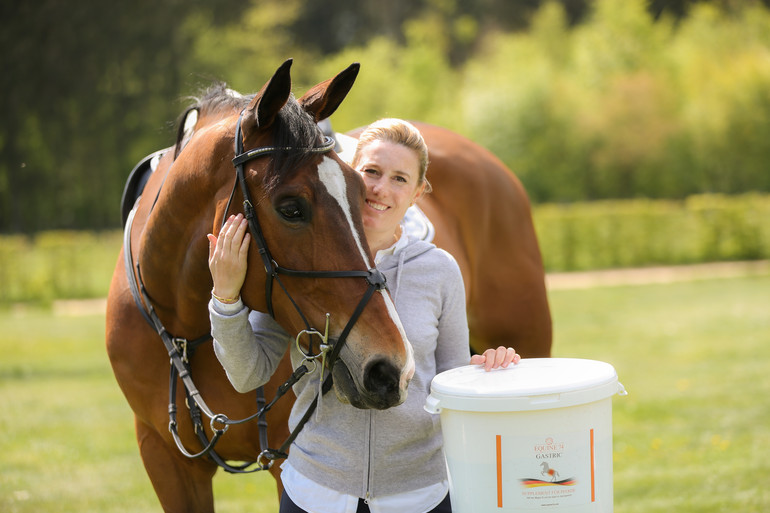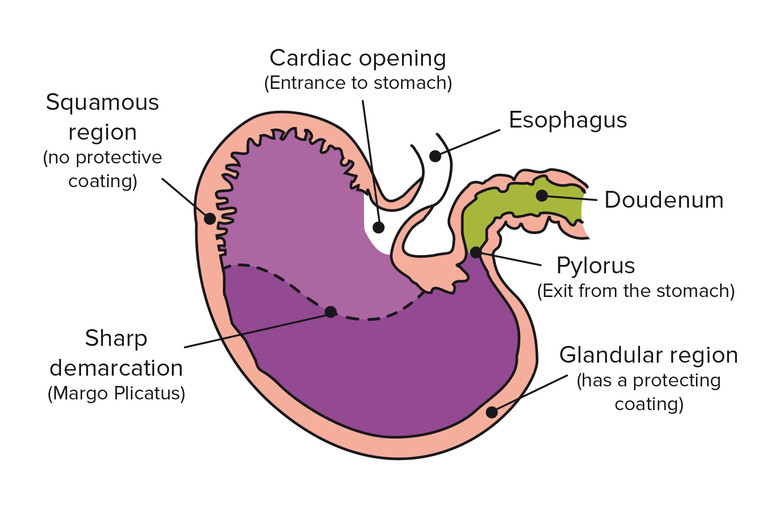What do top riders and horse people Nayel Nassar, Suzanne van Mierlo, Janne Friederike Meyer-Zimmermann and Lisa Nooren have in common? They pay attention to the signs of their horses' stomachs and try to find the optimal solution so that the well-being and performance of their sporting partners do not suffer. For them, Equine 74 Gastric, makes the difference.
How is the horse's gastric structured?
In order to achieve effective treatment of gastric ulcers, a little prior knowledge about the anatomy of the horse's gastric is required. The single-cavity gastric is quite small in relation to the horse's body size and holds only up to 15 litres. The entrance to the gastric (cardia) connects the oesophagus with the gastric. The horse's gastric belongs to the group of compound stomachs. The reason for this is the differentiation into two parts - the upper part with a squamous mucosa and the lower part with a glandular mucosa. The margo plicatus separates the two areas from each other in the form of a border line. The stomach outlet is called the pylorus and connects the stomach with the small intestine.
The upper, squamous part of the stomach contains no mucus-secreting glands that could form a protective layer against stomach acid. Therefore, the sensitive mucous membrane is particularly affected by an excess of gastric acid. If gastric acid reaches the gastric wall, this can lead to irritations, so-called lesions, within a very short time. Within 24 to 48 hours, irritation of the mucous membrane can develop into a crater-shaped gastric ulcer. The Latin term “ulcer” translates as "deep defect of the skin".
Although ulcers occur less frequently in the glandular part, they should not be disregarded, especially since the causes are often even more difficult to fathom here, since gastric acid is permanently present and can be ruled out as the only trigger.
We are happy that we have the all-natural supplements from Equine 74 to support us in our daily routine as best as possible we can, because healthy horses are happy horses
- Lisa Nooren -
Where do gastric ulcers develop in horses?
Before a gastric ulcer develops, an irritation of the stomach mucosa precedes it. The term Equine Gastric Ulcer Syndrome (EGUS) covers all lesions. A distinction is then made between Equine Squamous Gastric Disease (ESGD, ulcers of the non-glandular mucosa) and Equine Glandular Gastric Disease (EGGD gastric ulcers of the glandular mucosa). They can occur separately and together.
In order to be able to select a suitable medication or supplement for the horse's gastric, an exact diagnosis is required, because ESGD and EGGD are not only different in their cause but also in the treatment methods. Causes for gastric ulcers in the squamous part are often feed-related, whereas the cause for ulcers in the glandular mucosa is often stress. Ulcers at the Pylorus can be the result of mechanical irritation by feed such as alfalfa, but can also be caused by a backflow of predigested food from the small intestine.
Only a gastroscopy can provide information about the severity and localisation of the mucosal irritation or gastric ulcer. The lesions are classified according to their severity using the ulcer score (0-4). Depending on the diagnosis, the treatment method is then recommended by a veterinarian.
Equine 74 Gastric counteracts the effects of constant stress-related acid problems with high mineral acid buffering. Learn more.
What influence do husbandry and feeding have on the development of gastric ulcers in horses?
The causes of gastric ulcers are manifold - they can be caused by wrong feeding or bad husbandry, be a consequence of longterm-medication or occur due to stress. The assumption that only competition horses suffer from stomach ulcers is wrong. Approximately 40 % of leisure horses and 50 % of foals are also affected.
Horses are evolutionarily continuous eaters, and their stomachs are designed for this and are prepared to continuously consume small amounts of roughage. For this reason, gastric acid (HCl) is permanently produced so that the digestion process does not come to a halt.
This is a big difference to the natural gastric acid buffer bicarbonate. This is found in the horse's saliva, which is secreted just during the chewing process. In the wild, where constant grazing was guaranteed, horses produced enough saliva so that bicarbonate and stomach acid were naturally in balance.
Nowadays, the husbandry and feeding of horses has changed a lot. Feeding breaks and small amounts of roughage cause the natural balance of the stomach to become unbalanced. Less free movement and small amounts of roughage as well as irregular feeding times, intensive training, unloved box neighbours, a heterogeneous group composition on the pasture and much more can cause stress for some horses.
Sometimes it's the little things that make the difference, the few percent that can make the difference on Sunday in the Grand Prix. Equine 74 Gastric and Equine 74 CALMRELAX are a few percent of that for me!
- Janne Friederike Meyer-Zimmermann-
Stress - the trigger for stomach ulcers?
Veterinarians often say that stress-related overproduction of gastric acid is the main cause for a gastric ulcer. Gastric acid per se is not a bad thing. The horse's stomach is dependent on gastric acid because it plays an important role in digestion. On the one hand, it moistens the food pulp and prepares the food for further digestion, and on the other hand, it also kills bacteria in the feed.
But as always, the dose makes the poison! The horse cannot handle with a permanent overproduction of stomach acid. If there is too much acid in the stomach, it spills around like a small lake and damages the squamous mucous membrane. Especially when trotting and cantering, horses show discomfort and signal pain. That is why you should never ride your horse on an empty stomach.
Stress has also another influence: the cortisol level is increased during stress, which leads to a reduced blood supply to the stomach lining, which thus has a reduced resistance and cannot regenerate quickly enough. An irritation of the gastric mucosa in turn causes the horse pain, which further stresses the horse. This creates a kind of vicious circle. Stress should therefore be avoided as much as possible in the horse's environment.
Equine 74 Gastric Make your horse feel happy inside!
Natural Acidbuffer, optimized pH-level in horses stomach and gut that helps for better performance and satisfaction without compromise. Because good for your horse should also mean good for you! Order a free feed sample.
3 treatment options for gastric ulcers in horses
In addition to optimising husbandry, feeding and training, you can treat your horse with medication or support it with a supplement. Three types are distinguished here.
- Gastric acid buffers: Also called Antacids, these are alkaline substances that neutralise gastric acid that is already present. Neutralising means that the pH value in the stomach is raised and is therefore no longer so acidic. Equine 74 Gastric belongs to this group.
- Gastric acid blockers: They have the ability to block the production of gastric acid by inhibiting the proton pump of the occupant cells in the stomach. As a result, up to 99 % less stomach acid is produced, giving the damaged mucous membrane time to regenerate.
- Gastric protectors: They form a layer on the mucous membrane and protect the stomach wall from acid. Feed supplements based on pectins and lecithin are particularly suitable for this purpose, as they support the natural protective mechanisms of the stomach lining. The same applies to linseed, which contains a particularly high amount of mucilage. Some feeds can also support your horse's recovery. Find out here which ones are particularly suitable.










